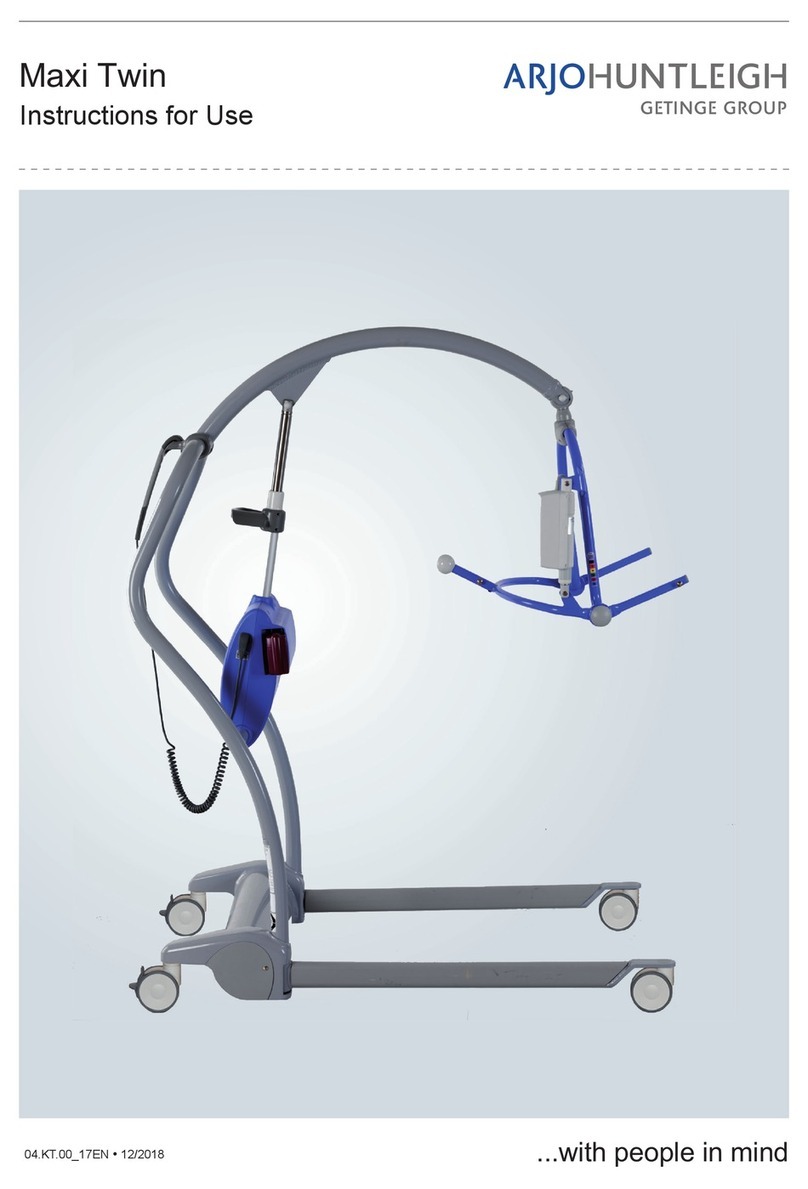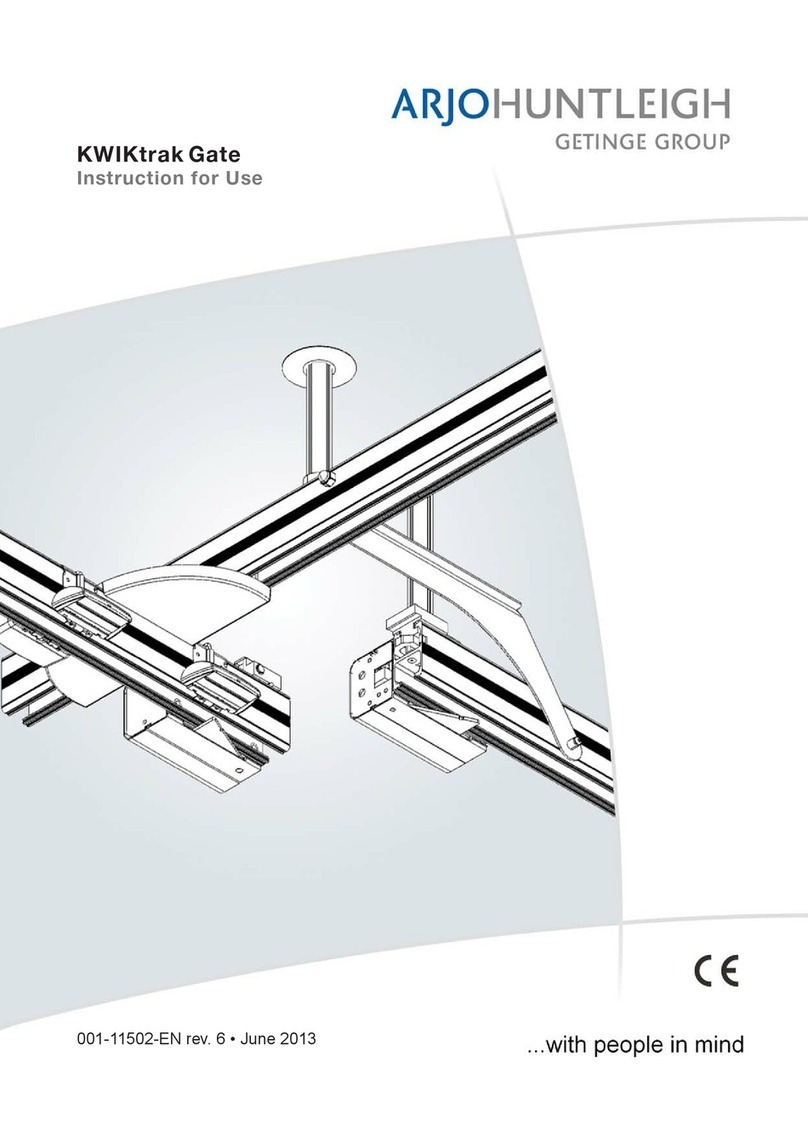
Safety Instructions
8
001.20058.EN rev. 10
General Instructions
• Always perform the recommended daily
maintenance before using the lift.
• Makesure specialconsiderationistakenwhen
transferring a patient who is connected to
electrodes, catheters or other medical devices.
• Always maneuver the lift by using the handle
located on the mast. If necessary, initiate the
movement by pushing on the back of the base
with your foot. Do not push on the legs.
• Do not attempt topush or pull a loaded lift over
obstructions on the floor—including steps,
door thresholds or moving sidewalks—if the
castors are unable to travel over them
smoothly.
• Do not push the lift at speeds which exceed a
slow walking pace (3 km/hour or 0.8 meter/
second).
• This mobile patient lift must be used by a
caregiver trained with these instructions and
qualified to work with the patient.
• Always ensure that controls and safety
features are used only in accordance with the
directives specified in this manual. Never
attempt to force a control or a button on the lift.
• While the chassis legs on the lift can be
opened to ease the transfer of a patient, they
should be kept closed when the lift is in
movement.
• Avoid any impacts during transfer.
• Any precautionary or instruction labels that
cannot be easily read are replaced.
Fig. 2
Shock Prevention
• Do not touch a damaged power cord.
Electricallylive equipmentcanresultinserious
injuries. If the lift or charger has any exposed
or damaged wires, contact your local
ArjoHuntleigh agent immediately.
• Check the nameplate for voltage and cycle
requirements. These requirements differ from
country to country. Do not attempt to use the
equipment in an area that has a different
voltage and cycle requirement than what is
indicated on it.
WARNING: Before attempting a transfer, a
clinical assessment of the patient’s suitability
for transfer should be carried out by a
qualified health professional. The transfer,
among other things, may induce substantial
pressure on the patient’s body. A transfer
conducted when it should not can degrade
the patient’s health condition.
WARNING: The lift must never be operated
by the patient. In the unlikely case of a
failure, the patient might get stuck in the
unit.
WARNING: Do not put fingers, hands or feet
where space is limited (see image below).
This could pinch, cut, or cause serious
harm.
WARNING: There is possible strangulation
risks related to the hand control cable.
Please take precautions to prevent these.
WARNING: This product contains small
parts that might present a choking danger
to children if swallowed or inhaled.
CAUTION: Keep all components of the lift
clean and dry to avoid a malfunction of the
lift.
CAUTION: Although the product is
manufactured according to high standards,
the SARA LITE and its accessories must
not be left in humid or wet areas for
extended periods of time. Do not spray the
SARA LITE or accessories (excluding
slings or ArjoHuntleigh approved wet
environment equipment) with water, such
as under the shower.
Safety Instructions






























